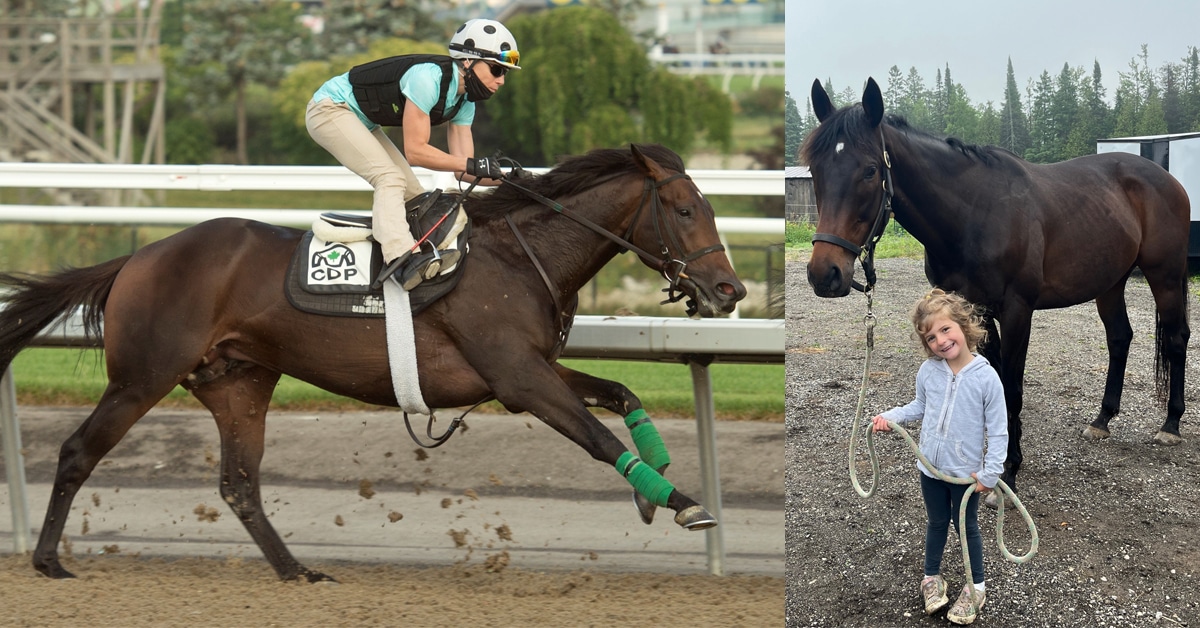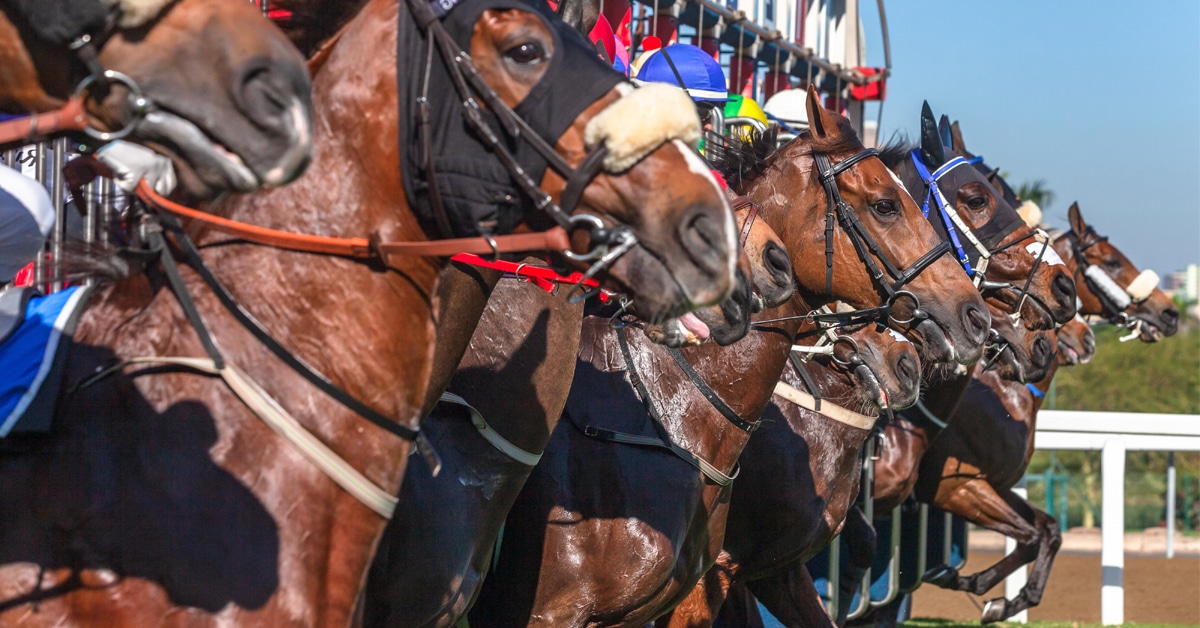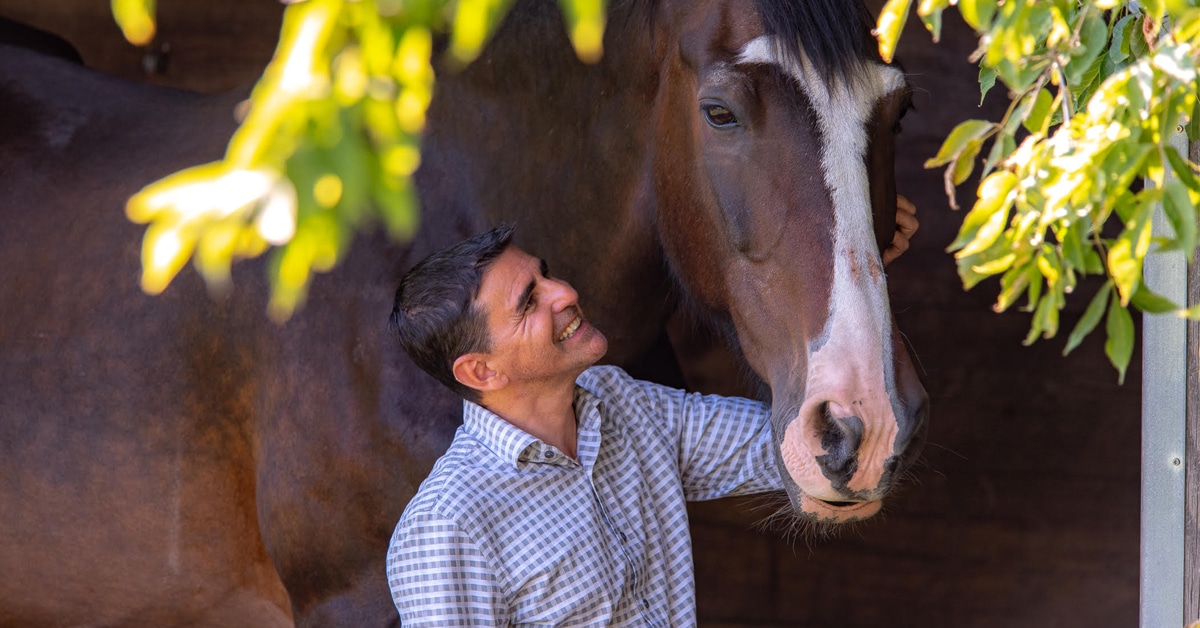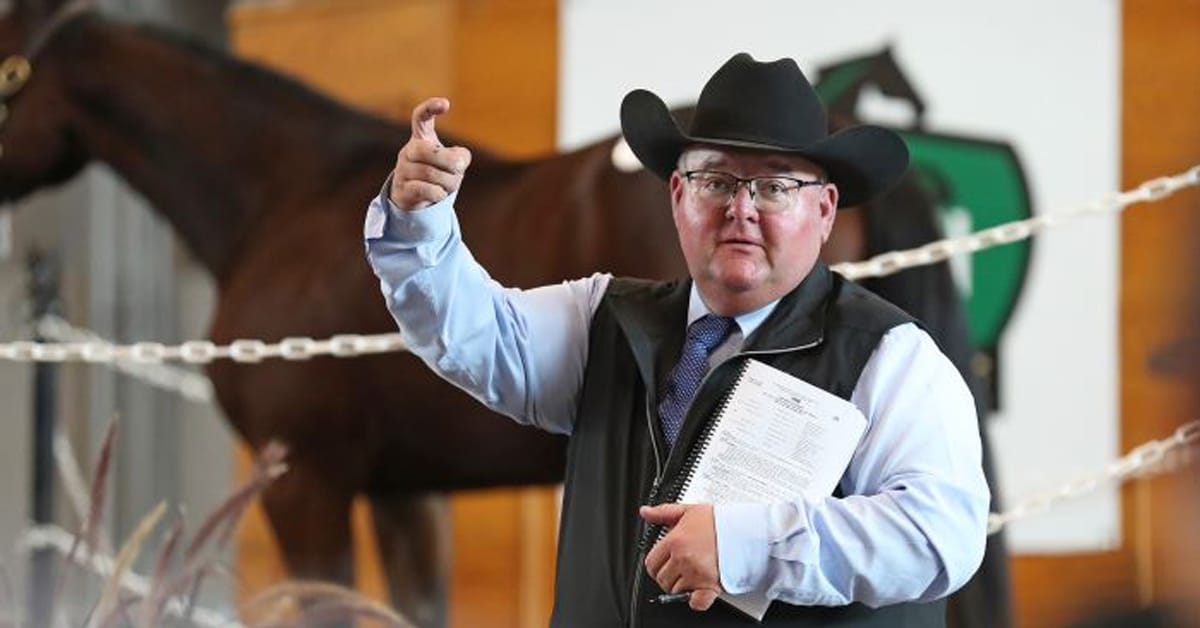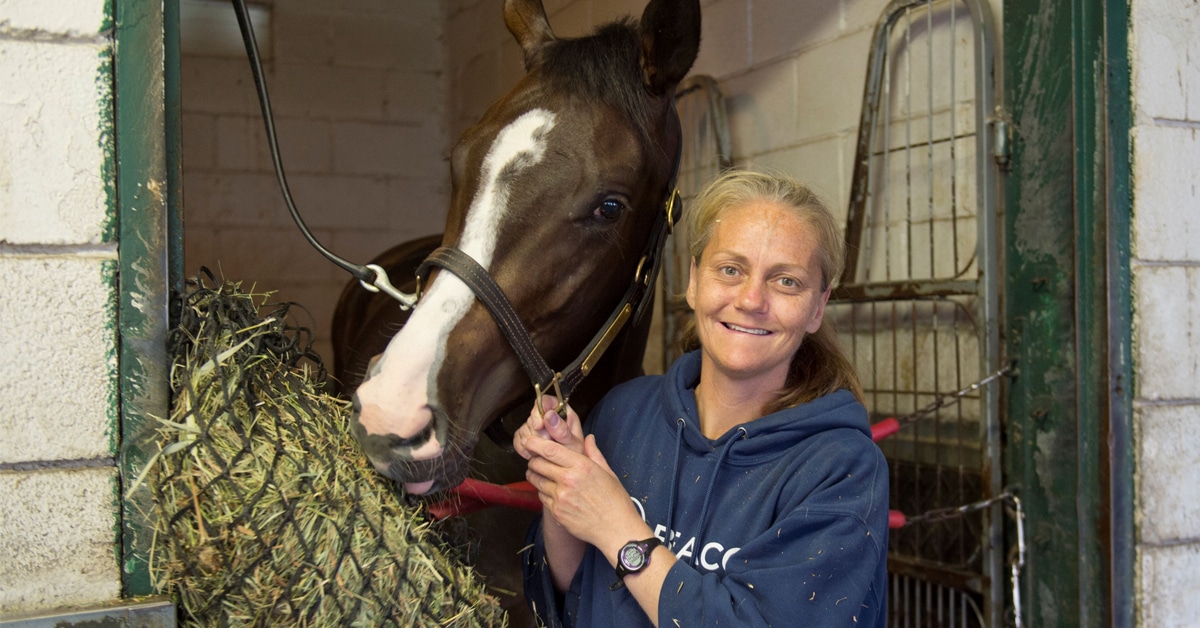There can no longer be much doubt that today’s Thoroughbred is not nearly as sound or durable as its ancestors of past decades–when racehorses often raced over a hundred times in their careers, while working two or three times a week. The media dramatized the fatal breakdowns of Barbaro and Eight Belles on national TV, but the greater problem is the rank-and-file racehorses who can no longer race long enough to pay their bills. Although today’s racehorses surely don’t get the foundation of long, slow works they once did, I’m afraid they have grown too fragile as a breed to withstand the grueling training schedules of their fore-bearers.
While many of today’s Kentucky Derby starters are not sound enough even to finish their three-year-old campaigns, this was hardly the case after Exterminator won the Kentucky Derby of 1918, then went on to race 100 times, winning fifty races, 33 of them stakes. Seabiscuit raced an incredible 35 times as a two-year-old in 1935, and he was just getting warmed up! Citation won the Kentucky Derby on three days rest, before capturing the Triple Crown and 19 wins in 1948. Today’s Thoroughbreds couldn’t do this if their life depended on it. (And unfortunately it sometimes does.)
Shortcuts in modern training methods are likely not the only reason for this growing frailty, however. There are still a good many veteran trainers in their seventies and eighties who surely have the wherewithal to use those traditional methods if they were rewarded on the racetrack. But we no longer see horses working twice a week, or racing twice a month for many years. As Hall of Fame trainer Charlie Whittingham said of the horses of his youth, “Those horses were built like Russian tanks.” A survey by Washington Post columnist Andrew Beyer in the 1990s reported that he didn’t find a single prominent trainer who didn’t feel there had been a significant decline in soundness and durability in the breed.
It’s surely true that today’s owners and trainers are looking primarily for early speed and want a quick return on their investment, but sadly today’s best horses are not getting faster, at least in graded stakes. The average times for graded stakes were at their fastest back in the 1970s, when graded stakes were first designated, and they have never been as fast since. Likewise the average Kentucky Derby times were at their fastest in the 1960s, and they have been slightly slower ever since.
Although the rank-and-file claimers are now faster than ever, if breeders are sacrificing soundness for speed they are not getting a very good return on their investment, since horses still need to eat even when they aren’t sound enough to race, not to mention the astronomical veterinary bills. Sadly, most new owners are quickly driven out of the business today, and most often were never consulted by their vets on the medications that were used in the first place.
Agricultural breeders of plants and animal livestock alike have found some fundamental principles of breeding science that are standing the test of time and surely hold promise for Thoroughbred breeders as well. Using well-tested principles of linebreeding, nicking, and outcrossing, chicken and dairy breeders saw the production of milk and eggs increase nearly fivefold over the 20th Century. These agricultural breeders often have the advantage of being able to produce many offspring inexpensively, but the underlying principles of mathematics and population genetics surely apply to racehorses as well.
Genetic Variety
Breeding to small island populations of individuals, whether human or Thoroughbred, almost inevitably will see some negative genetic traits become fixed in the breed until there is no escape but extreme outcrossing to create a form of hybrid vigor. Since the Thoroughbred has had a closed stud book for two centuries, it’s very likely that today’s unsoundness of legs and lungs reflects this fundamental lack of genetic variety, with no obvious solution except to start selecting for soundness and durability when breeding, rather than breeding exclusively for speed, especially when unsound individuals are often bred.
It’s very hard to escape the fact that the bloodlines of Mr. Prospector and Northern Dancer are now the two most dominant bloodlines in the breed, and both had their three-year-old campaigns shortened by serious injuries. Both are grandsons of Native Dancer who retired with injury himself, and Northern Dancer’s dam, Natalma, retired with injury to the breeding shed before her three-year-old campaign even began. This is certainly not to say these stallions should never have gone to stud, but rather that their mates should have been unusually sound whenever possible, and likewise their descendants who went to stud.
Legendary Italian breeder Federico Tesio, (who bred undefeated champions Nearco and Ribot), wrote that when breeders stop selecting for a particular trait it will eventually be lost to the breed. He cited the gradual decline of a prize-winning variety of rose where breeders lost its wonderful fragrance because they bred only for looks. Similarly we have seen growing problems with hip-dysplasia in show dogs whose owners breed largely for looks at the expense of health and soundness.
Improving durability in racehorses
Selecting for soundness and durability is something that both large and small breeders can benefit from, but it’s particularly useful for smaller “mom-and-pop” breeders who may only have a few broodmares in their barn. While commercial breeders are looking for flashy race-records and stakes wins to promote their yearling sales, smaller breeders can select hard-hitting and durable stallions and broodmares at modest cost, whose offspring are likely to enjoy sounder racing careers than their more expensive counterparts.
Several years ago the Grayson-Jockey Club Research Foundation began a study to discover which sires showed the largest number of lifetime starts among their offspring. While this is a step in the right direction, there are some subtleties in statistical analysis that probably need to be addressed. For example, stallions whose offspring are not highly valued at stud will show more lifetime starts for their offspring than stallions who see their best offspring retired to stud after their three-year-old seasons. These fashionable stallions will thus be penalized statistically by seeing their offspring prematurely retiring to the breeding shed. (This might be rectified by comparing only the four-year-old starters for various stallions, or five-year-old starters, etc.)
This is likely less of a factor in Canadian breeding than in the United States. In any case, breeders can get a good idea of the durability of a stallion’s offspring from a closer look at the annual stallion directories. Another factor which is seldom discussed pertains to anatomy and bone-density. Skeletons of great racehorses from the past suggest that these horses had bone-densities as much as 50% higher than their lighter-boned modern counterparts, which might account for much of the unsoundness and breakdowns that plague today’s Thoroughbred. While today’s training programs could surely be improved in this regard, breeders will surely be rewarded by selecting for soundness among the stallions and mares who displayed notable durability.
The two tables below were compiled by the Durability Committee of the Welfare and Safety Stallion Lists, and by the Durability Committee of the Welfare and Safety of the Racehorse Summit. The project was under-written by the Grayson-Jockey Club Research Foundation. The aim is to highlight stallions which are commercially viable AND produce progeny statistics which would tend to indicate above average performance in two areas: average number of lifetime starts per starter and percentage of foals which get to the races.
The Latest
